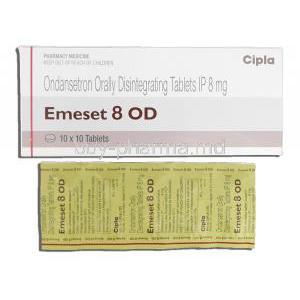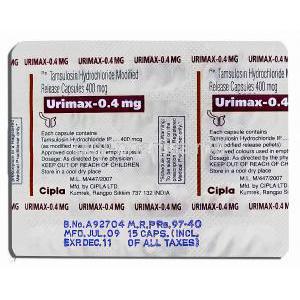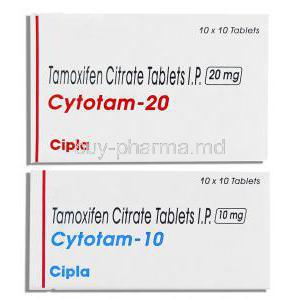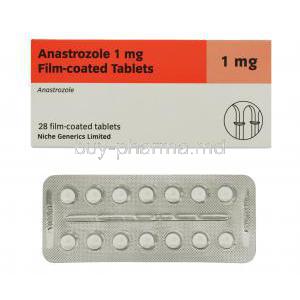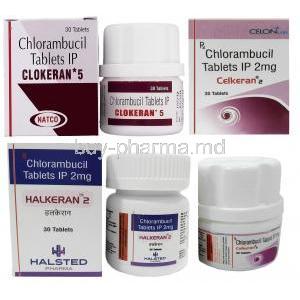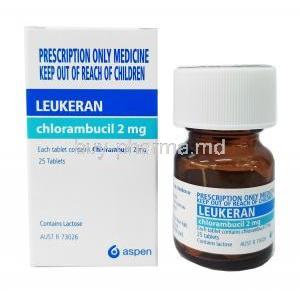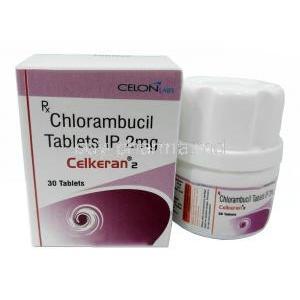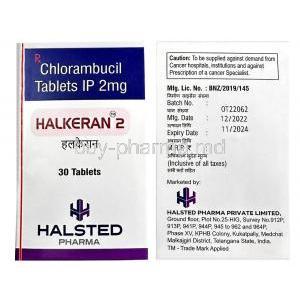Eloxatin Injection
- Introduction to Eloxatin Injection
- Comprehensive Uses of Eloxatin Injection
- Exploring Off-Label Uses of Eloxatin
- Understanding How Eloxatin Works
- Dosage and Administration Guidelines
- Composition and Ingredients of Eloxatin
- Storage and Handling of Eloxatin Injection
- Eloxatin Interaction with Other Medications
- Warnings and Contraindications
- Side Effects: An Overview
- Detailed Analysis of Common Side Effects
- Administering Eloxatin with Caution
- Important Precautions During Treatment
- Eloxatin Administration in Special Populations
- Addressing Overdosage Scenarios
- Handling Precautions for Healthcare Providers
Introduction to Eloxatin Injection
Eloxatin, a chemotherapy agent, plays a significant role in cancer treatment. It contains oxaliplatin, a component that is well known for its effectiveness in stopping the growth of cancerous cells. This injectable medication brings hope to patients who are fighting against cancer.
Eloxatin has a role at the forefront of cancer therapy. As a platinum-based drug, it creates connections within DNA strands, which hinders the replication and transcription processes for the survival of cancer cells. This complex mechanism is why it is used in cancer treatment protocols, providing a ray of hope in the challenging battle against malignancy.
Comprehensive Uses of Eloxatin Injection
Eloxatin is primarily used for cancer treatment, crucial in adjuvant and palliative treatment. It offers an advantage for patients battling this challenging illness, improving their survival rates and quality of life.
- In Adjuvant therapy, Eloxatin is administered after surgery to eliminate any remaining cancer cells and minimize the risk of recurrence.
- On the other hand, in palliative care, it is given to relieve symptoms in the advanced stages of the disease with a focus on improving patient comfort and overall health being.
Eloxatin's versatility also extends to its use in cancer cases. When combined with chemotherapy drugs, it synergizes to have a more profound anti-tumor effect. This comprehensive approach plays a role in managing metastatic instances in which the primary goal shifts from curative measures to prolonging life and alleviating symptoms.
Exploring Off-Label Uses of Eloxatin
Besides its established role in treating cancer, Eloxatin is being investigated for its potential use in a broader range of cancer types. These studies aim to uncover therapeutic pathways showcasing cancer therapy's ever-evolving landscape. Eloxatin's investigational uses include evaluating its effectiveness against ovarian and gastric cancers.
Multiple clinical trials are currently underway to validate the drug efficacy in these roles and understand its interaction with different cancer subtypes. The emerging research on Eloxatins off-label applications is driven by a desire to expand the possibilities. This exploration plays a role in fighting against cancer by offering hope for innovative treatment strategies and improved patient outcomes.
Understanding How Eloxatin Works
At the core of Eloxin's abilities lies its unique way of working. As a platinum-based compound, it creates connections within DNA, disrupting the synthesis and transcription processes. This disruption leads to the demise of cancer cells that divide rapidly. This intricate mechanism is what makes Eloxatin effective in slowing down tumor growth. We can see that Eloxatin operates differently when compared to chemotherapy drugs.
While some drugs target receptors or pathways related to cell growth, Eloxatin takes a more direct approach by affecting cancer cells' genetic material. This distinction is crucial when choosing treatment plans and understanding how different drugs can work together synergistically. Understanding how Eloxatin works helps with its application and contributes to our broader understanding of cancer treatments as a whole. It plays a role in solving the complex puzzle of oncology and provides valuable insights for developing more targeted and efficient therapies.
Dosage and Administration Guidelines
Administering Eloxatin requires attention to dosage guidelines that are tailored to specific conditions. The recommended dosage varies depending on factors such as the type of cancer, the patient's overall health, and the treatment phase. The goal is to maximize benefits while minimizing potential side effects.
- For cancer, the dosage is often determined by the disease stage and how well the patient responds to treatment.
- When Eloxatin is combined with chemotherapy agents, dosages are adjusted for optimal synergy and reduced toxicity.
The administration of Eloxatin follows protocols to ensure safety and effectiveness. It is typically given intravenously, which requires preparation and monitoring during infusion. Adhering to these procedures is crucial for achieving therapeutic outcomes while minimizing risks or complications.
Composition and Ingredients of Eloxatin
The formulation of Eloxatin consists of a combination of inactive components, each having a crucial role in its effectiveness as a treatment. The active ingredient, oxaliplatin, is responsible for combating cancer by disrupting the replication of cancer cells. On the other hand, the inactive ingredients are often overlooked but are essential in stabilizing the formulation, aiding in its administration, and improving absorption.
Although these components do not directly contribute to the drug's anticancer activity, they are essential for ensuring that the treatment is effective and safe. Healthcare professionals need to understand the composition of Eloxatin to optimize its use in cancer treatment. Every ingredient, whether active or inactive, ensures that medication acts efficiently and reliably in fighting against cancer.
Storage and Handling of Eloxatin Injection
The effectiveness of Eloxatin as a chemotherapy drug depends on following the recommended storage and handling instructions. It's crucial to store the drug under conditions to maintain its potency and ensure safety. Eloxatin should be stored at room temperature, away from light and moisture, to keep it stable and effective.
- The recommended temperature range for storage is between 15 to 25°C (59 to 77°F) to minimize the risk of degradation.
- It should always be stored in its original packaging to protect Eloxatin from exposure since the drug is sensitive to light.
It's essential to adhere to safety protocols when handling and disposing of Eloxatin to prevent accidental exposure or contamination. Healthcare providers must wear protective clothing and use proper equipment while following specific disposal procedures outlined by healthcare regulations. This ensures the safety of healthcare workers and maintains environmental integrity.
Eloxatin Interaction with Other Medications
In the world of cancer treatment, it's essential to be aware of how Eloxatin interacts with other medications. Proper management of these interactions is crucial. To ensure the results and minimize any adverse effects, it's essential to understand everyday drug interactions and their impact.
- Eloxatin can also interact with chemotherapy drugs, affecting their absorption and effectiveness.
- Additionally, certain medications used for health conditions may also interact with Eloxatin.
In some cases, dosage adjustments or alternative therapies might be necessary. To administer Eloxatin effectively, healthcare professionals must evaluate all the medications a patient takes. This thorough assessment helps prevent interactions and ensures a comprehensive and successful treatment plan for individuals with cancer.
Warnings and Contraindications
A cautious approach to administering Eloxatin involves identifying and managing patients who are at risk. Certain existing medical conditions and individual patient factors can significantly increase the risks associated with Eloxatin treatment. Therefore, it is essential to conduct an assessment before using this medication.
- Patients with impaired kidney or liver function may experience severe toxic effects of Eloxatin.
- In some cases, healthcare providers need to consider the situation carefully and may need to adjust the dosage accordingly. If a patient has a history of reactions to platinum-containing compounds, they should not use Eloxatin.
Some conditions make the use of Eloxatin inappropriate. These include bone marrow suppression, significant bleeding disorders, and certain types of nerve damage. Healthcare providers must evaluate these factors to prevent life-threatening complications.
Side Effects: An Overview
Although Eloxatin is a weapon in the battle against cancer, it does come with its fair share of side effects. Both doctors and patients must understand and address these effects to minimize their impact.
- Neuropathy: One of the common side effects of Eloxatin is peripheral neuropathy, which can cause tingling and numbness in the extremities.
- Gastrointestinal Discomfort: Patients undergoing Eloxatin treatment often experience nausea, vomiting, and diarrhea symptoms.
Proactively managing these side effects is essential to ensure patient comfort and adherence to treatment plans. This includes using antiemetics before they occur to prevent nausea, strategies for managing pain, and closely monitoring blood counts to identify and address any early signs of bone marrow suppression.
Detailed Analysis of Common Side Effects
Oncologists and patients must understand the side effects of Eloxatin to navigate the complex landscape of cancer treatment. The frequency and severity of these side effects can vary significantly among patients depending on dosage, duration of therapy, and individual susceptibilities.
- Neuropathy is a side effect that can range from mild tingling to severe discomfort, significantly impacting the quality of life for patients.
- Gastrointestinal issues such as nausea, vomiting, and diarrhea can also occur at intensity levels and require proactive management.
It is essential to monitor the long-term implications of Eloxatin's side effects. For example, neuropathy may. Develop even after treatment has ended, making regular evaluations necessary. Likewise, ongoing assessments are vital in identifying and addressing gastrointestinal and blood-related complications and kidney function complications.
Administering Eloxatin with Caution
The administration of Eloxatin requires a personalized approach, especially for patients with pre-existing conditions or those undergoing other treatments. It is essential to consider factors like adjusting the dosage and timing of administration alongside medications to minimize risks.
- Dosage Adjustments: Patients with impairment or heightened sensitivity to platinum compounds need modified doses to balance effectiveness and safety.
- Concurrent Therapies: When using Eloxatin as part of combination therapy, it is crucial to coordinate treatments to prevent worsening side effects.
Regular monitoring for reactions is a crucial aspect of Eloxatin treatment. Consistent clinical evaluations, including nerve function tests and blood work, aid in detecting and managing adverse effects, ultimately optimizing patient outcomes and improving the overall quality of care.
Important Precautions During Treatment
When receiving treatment with Eloxatin, patients need to be aware of lifestyle and dietary factors that can improve the effectiveness of the treatment and reduce side effects. These precautions are crucial in managing cancer therapy as a whole.
- Lifestyle Adjustments: Patients are advised to limit their alcohol intake and avoid activities that might worsen side effects such as neuropathy.
- Dietary Considerations: A diet possibly supplemented with specific nutrients can help alleviate some side effects and promote overall health.
Patient education and obtaining consent are essential aspects of Eloxatin therapy. Patients must understand their treatment's potential side effects and the significance of adhering to the prescribed plan to make informed decisions and actively participate in their treatment process.
Eloxatin Administration in Special Populations
Administering Eloxatin to groups, such as older patients, expecting mothers, breastfeeding women, and children, requires additional precautions to ensure safety and effectiveness.
- When it comes to patients, it's crucial to adjust dosages and closely monitor them due to the higher risk of side effects and other health conditions.
- As for women and nursing mothers, Eloxatin carries potential risks during pregnancy and lactation. It is essential for healthcare providers to carefully evaluate the benefits versus risks and explore treatments if necessary.
- Regarding children, the safety and effectiveness of Eloxatin are still being studied. Administering this medication to patients requires careful consideration based on their age and development stage.
Adapting dosages accordingly becomes essential in providing tailored therapy for these populations. This personalized approach ensures that every patient receives suitable care that meets their needs.
Addressing Overdosage Scenarios
If someone takes too much Eloxatin, it's crucial to recognize the symptoms quickly and take immediate action to prevent serious health problems. While overdosing on Eloxatin is rare, it can lead to risks such as worsened side effects and potential long-term health issues.
- Signs of an overdose may include intense neuropathy, severe gastrointestinal problems, and abnormal blood counts.
- It is crucial to seek emergency help immediately to provide the necessary treatment and support for the patient's stability.
Managing the effects of an overdose in the term involves regular monitoring and customized interventions to address any lingering or delayed symptoms. This comprehensive approach is essential for the patient's recovery and preventing complications.
Handling Precautions for Healthcare Providers
Healthcare professionals administering Eloxatin must follow safety measures to protect themselves and their patients.
- This includes using personal protective equipment (PPE) and following aseptic techniques to prevent exposure or contamination during drug preparation and administration.
- Regular training is provided to healthcare providers on the protocols for handling potent medications like Eloxatin.
This ensures they are well prepared to safely and effectively manage these drugs. It is crucial to prioritize the safety of healthcare providers alongside safety. These precautions and training protocols play a role in creating a safe treatment environment and achieving optimal patient outcomes.


